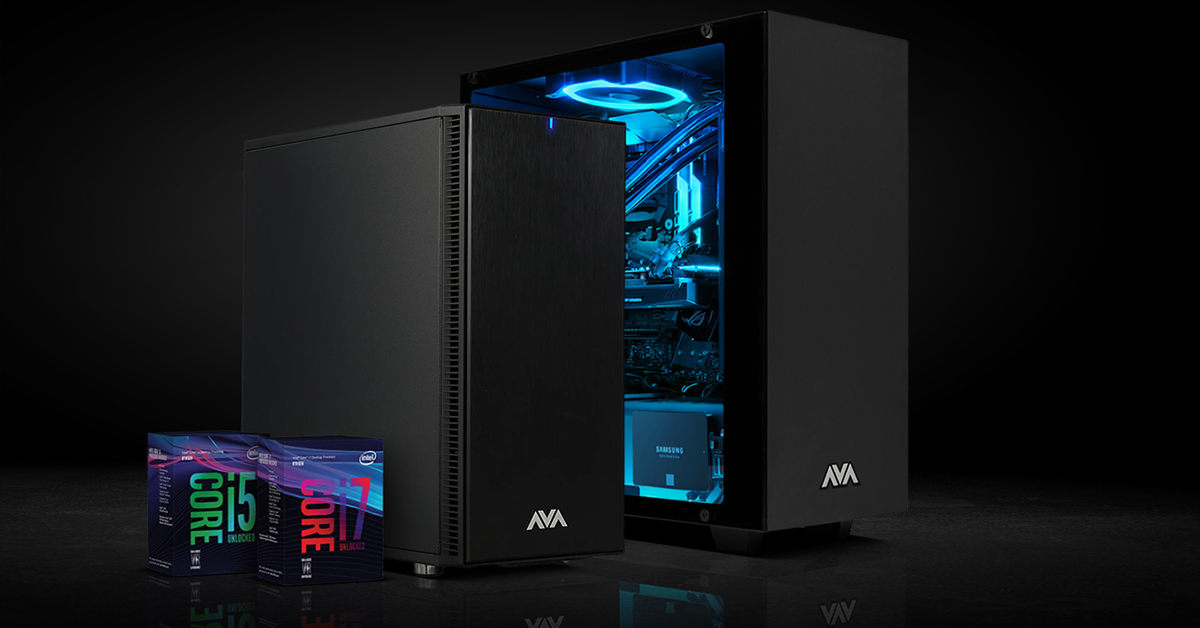After just 10 short months, Intel® has released the descendant to its popular Kaby Lake series platform, code name Coffee Lake. With this release comes much anticipated upgrades to Intel’s mainstream platform. Will Intel stick with the norm and expand on cores? Or will they focus more on single-core performance in their mainstream platform?
At this point, you probably just want to see what the specifications for the new chips look like already, right?
Let’s take a look at the lineup in the chart below:
| Chip | Physical Cores/Threads | Base Clock Speed | Max Turbo Frequency | TDP* |
| I7-8700K | 6C/12T | 3.7GHz | 4.7GHz | 95 Watts |
| I7-8700 | 6C/12T | 3.2GHz | 4.6GHz | 65 Watts |
| I5-8600K | 6C/6T | 3.6GHz | 4.3GHz | 95 Watts |
| I5-8400 | 6C/6T | 2.8GHz | 4GHz | 65 Watts |
| I3-8350K | 4C/4T | 4GHz | N/A | 91 Watts |
| I3-8100 | 4C/4T | 3.6GHz | N/A | 65 Watts |
What was the first thing you noticed? The increase in cores for all chips? How about the increased boost clock speeds across the board? With the newest release of the 8th Generation Intel® Core™ processors, Intel pretty much upgraded everything across the board; introducing the first 6-core, 12-thread i7 processor in their mainstream platform. Along with this, they also introduced the first 6-core, 6-thread i5, and the first 4-core, 4-thread i3.
On the surface, it appears that Intel is going with the flow and competing to shove the most cores in a mainstream processor as possible (competing with the Ryzen R7 and R5). However, when we look further into things, we see that they have also increased clock speeds across the board and have configured the new platform to boost single core speed as well, utilizing technology such as the Turbo Boost 2.0.
Along with all of this, some other big upgrades and differences over Kaby Lake are:
- DDR4-2666 memory standard
- Flex TDP
- Extra cache
Though there are many upgrades in the new platform there are also many similarities between Kaby Lake and Coffee Lake.
These include:
- 16 dedicated PCIe Lanes
- Dual channel memory
- Same LGA 1151 socket**
- Same cooler mounting
Now that we have gone over the basics of the new chips that are being offered, what will the new Z370 chipset bring to the table? The new chipset will be very similar to its predecessor, the Z270 chipset. Let’s take a look at a brief comparison chart between the two:
| Z370 | Z270 | |
| Processor Support | Coffee Lake | Kaby Lake/Sky Lake |
| Maximum additional PCIe lanes | 24 x PCIe 3.0 | 24 x PCIe 2.0 |
| Maximum USB ports | 14 (10 x USB 3.1) | 14 (10 X USB 3.0) |
| Maximum SATA ports | 6 | 6 |
| RAID Configuration Options | PCIe 0,1,5 / SATA 0,1,5,10 | SATA 0,1,5,10 |
| DRAM Support | DDR4 | DDR4 |
| Socket | LGA-1151 | LGA-1151 |
As you can see, there are not many differences between the two. Intel decided to keep the number of additional PCIe lanes the same, but upgrade from the older 2.0 standard to the newer 3.0 standard. They opted to take the same approach with USB support, keeping a maximum of 14, but opting to go with the newer USB 3.1 standard, instead of the older and slower 3.0 standard.
Though the specifications are roughly similar, unfortunately, you cannot upgrade to a Coffee Lake chip using an older Z170 or Z270 board. Intel is citing the extra cores and additional power demands of the new processors (namely FLEX TDP) as the reasoning to this.
The embargo on Intel Core 8th generation processors lifts today and they are now available for your next build. However, lower-grade chipsets, such as H370, will be officially released in Quarter one of 2018. AVADirect will have some of the first chips and boards that are released, so call in and get your Coffee Lake powered system!
*Keep in mind that though the default max is listed as the TDP, these chips do employ FLEX TDP
**Though Z370 uses the same socket as Z170 and Z270, processors and boards are not interchangeable
